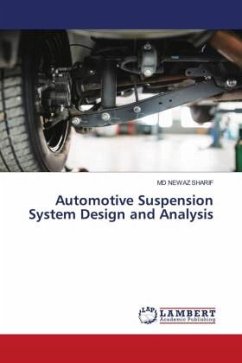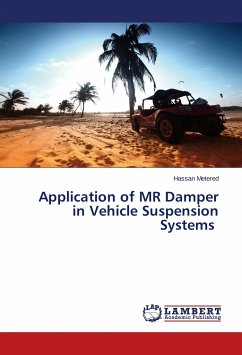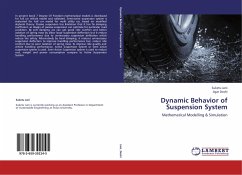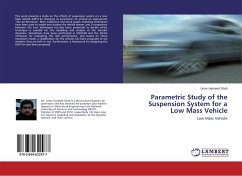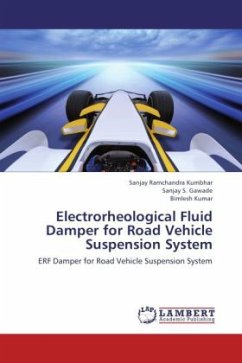
Electrorheological Fluid Damper for Road Vehicle Suspension System
ERF Damper for Road Vehicle Suspension System
Versandkostenfrei!
Versandfertig in 6-10 Tagen
32,99 €
inkl. MwSt.

PAYBACK Punkte
16 °P sammeln!
The suspension systems of automobiles, trucks, motorcycles and many other vehicles customarily have passive hydraulic "shock absorber" or damper assemblies connected in parallel with springs between the vehicle frame and axle components to minimize motion of the vehicle frames and to thereby enhance the riding comfort, stability and/or safety of the vehicles. To overcome the limitations of conventional shock absorbers for vehicle dynamics, passive dampers are being increasingly replaced by adjustable dampers. Electrorheological (ER) and Magnetorheological (MR) fluids experience changes in rheo...
The suspension systems of automobiles, trucks, motorcycles and many other vehicles customarily have passive hydraulic "shock absorber" or damper assemblies connected in parallel with springs between the vehicle frame and axle components to minimize motion of the vehicle frames and to thereby enhance the riding comfort, stability and/or safety of the vehicles. To overcome the limitations of conventional shock absorbers for vehicle dynamics, passive dampers are being increasingly replaced by adjustable dampers. Electrorheological (ER) and Magnetorheological (MR) fluids experience changes in rheological properties (yield stress, plasticity, and elasticity) when they are subjected to an applied electric or magnetic field respectively. The designed ER fluid damper makes use of the ER-effect in compression and rebound. In this work, an attempt is made to design, develop & test the smart fluid damper, particularly ER Fluid damper, for road vehicle suspension system which will give the advantages over the conventional shock absorbers.



